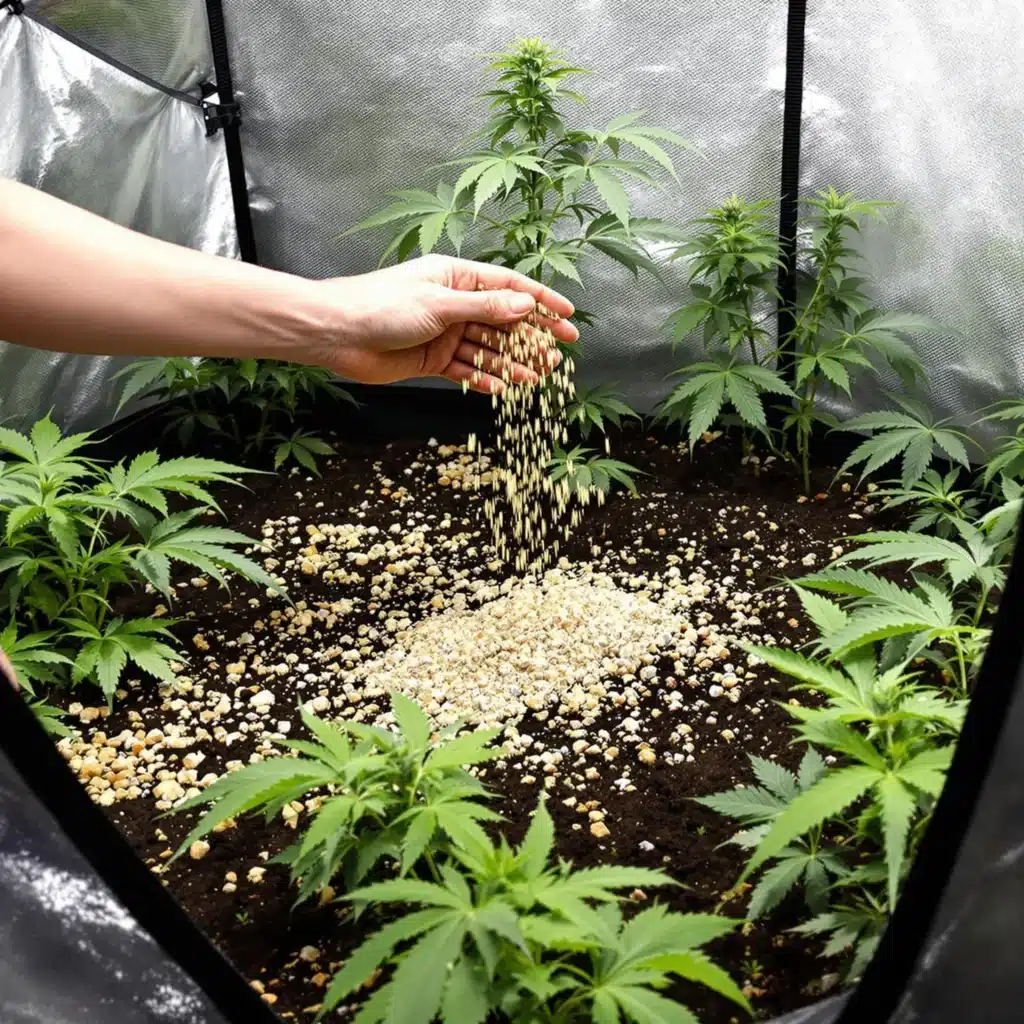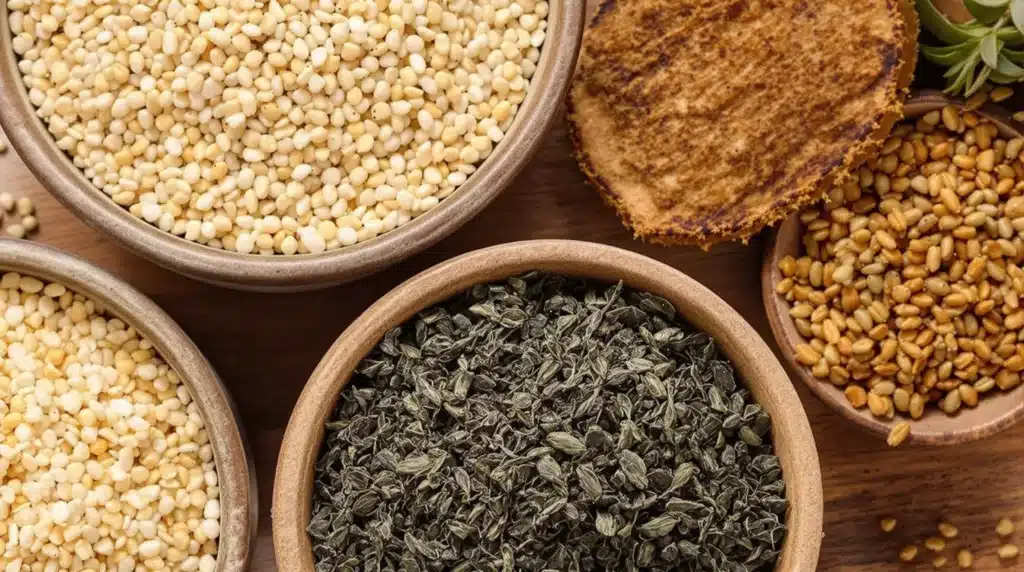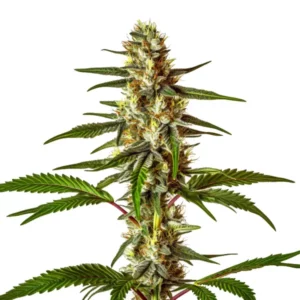
Organic Dry Amendments for Cannabis: Boost Your Growth Naturally
Are you looking to take your cannabis cultivation to the next level with natural methods? Organic dry amendments are one of the best ways to provide your cannabis plants with the nutrients they need for healthy, vigorous growth without using synthetic fertilizers. In this comprehensive guide, we’ll explore everything you need to know about organic dry amendments, from their benefits to the best application techniques for each growth stage. Dive in and learn how to harness the power of natural soil nutrients to grow healthier, more potent cannabis.
What Are Organic Dry Amendments?
Organic dry amendments are natural substances added to soil to provide essential nutrients for plant growth. Unlike liquid fertilizers, these amendments come in solid, granular form and are mixed into the soil or applied as a top-dressing. They release nutrients slowly over time, feeding your plants throughout their growth cycle.
Definition of Organic Dry Amendments
Organic dry amendments are nutrient-rich materials derived from natural sources like plants, animals, and minerals. They’re used to enrich the soil and provide long-lasting nutrients that improve plant health and yield. The key to these amendments is that they release their nutrients slowly, allowing plants to take what they need without being overwhelmed.
This slow-release process makes organic dry amendments perfect for cannabis cultivation, as it ensures that your plants get a steady supply of essential nutrients without the risk of over-fertilizing. Whether you are growing indoors or outdoors, adding organic dry amendments can help you achieve a healthier root system, lush foliage, and bigger, more resinous buds.
Common Uses in Cannabis Cultivation
In cannabis cultivation, organic dry amendments are used to create a nutrient-rich growing medium that supports every stage of the plant’s life cycle. They help build a healthy microbial community in the soil, which plays an essential role in nutrient uptake. Amendments like bone meal, bat guano, kelp meal, and worm castings can be added to improve different aspects of soil health, from nutrient content to water retention.
Growers also use organic dry amendments to enhance the quality of their final product. Because they’re natural, these amendments help produce cannabis that’s free from harsh chemicals, resulting in a cleaner, more flavorful smoke. Organic dry amendments are an essential part of any grower’s toolkit, especially those looking to cultivate cannabis in a sustainable and environmentally friendly way.
Promos & Deals
Benefits of Using Organic Dry Amendments
Using organic dry amendments provides numerous benefits, not just for your cannabis plants, but also for the environment. Let’s take a closer look at why these amendments are so advantageous for growers.
Improved Soil Health and Structure
One of the most significant benefits of organic dry amendments is that they improve the overall health and structure of your soil. Amendments like worm castings and kelp meal help build a rich, fertile soil that encourages strong root growth and improves water retention. Healthy soil is the foundation for healthy plants, and organic amendments ensure that your soil is thriving with beneficial microbes and fungi.
The presence of these microorganisms helps break down organic matter, making nutrients more available to your cannabis plants. Over time, this process creates a self-sustaining soil ecosystem that requires less intervention and results in more resilient plants.
Long-Lasting Nutrient Release for Plants
Unlike synthetic fertilizers that can deliver a quick burst of nutrients, organic dry amendments release nutrients slowly over weeks or even months. This sustained release ensures that cannabis plants receive a consistent supply of the nutrients they need for growth, without the risk of nutrient burn or toxic buildup.
For growers, this means less frequent feeding schedules and healthier plants. Organic dry amendments like bone meal, alfalfa meal, and rock dust are particularly useful during the flowering phase when cannabis plants require a steady supply of phosphorus and potassium to produce large, resinous buds.
Environmental Advantages
Another major advantage of using organic dry amendments is their positive impact on the environment. Unlike synthetic fertilizers that can leach into waterways and cause pollution, organic amendments are derived from natural sources and do not contain harmful chemicals. By using these amendments, you’re contributing to a healthier ecosystem and reducing the negative environmental impact of cannabis cultivation.
Organic farming practices also promote soil conservation, reduce erosion, and enhance biodiversity. By choosing organic dry amendments, you’re not only growing better cannabis but also helping to protect the environment for future generations.
Types of Organic Dry Amendments for Cannabis
There are many different types of organic dry amendments, each with its unique benefits for cannabis cultivation. Below, we’ll explore some of the most popular options and how they can enhance your growing medium.
Bone Meal and Its Benefits
Bone meal is a high-phosphorus organic amendment made from ground animal bones. It’s particularly beneficial during the flowering phase of cannabis growth, as it helps promote strong bud formation and enhances the overall quality of the flowers.
Bone meal also provides a small amount of nitrogen and calcium, which helps strengthen cell walls and supports the structural integrity of the plant. Adding bone meal during the flowering phase can lead to larger, denser buds with increased resin production.
Bat Guano for Enhanced Flowering
Bat guano is another popular organic dry amendment used in cannabis cultivation. It’s rich in both phosphorus and potassium, making it an excellent choice for enhancing the flowering phase. Bat guano is also known for its ability to stimulate beneficial microbial activity in the soil, which improves nutrient uptake and helps the plant develop more vigorous roots.
When using bat guano, it’s important to mix it well into the soil or apply it as a top-dressing. The nutrients in bat guano are highly concentrated, so a little goes a long way. When used correctly, bat guano can help produce potent, aromatic buds with an impressive resin content.
Alfalfa Meal as a Nitrogen Source
Alfalfa meal is a great source of nitrogen, an essential nutrient for the vegetative phase of cannabis growth. It also contains trace minerals and plant growth hormones that help stimulate healthy growth. Alfalfa meal breaks down relatively quickly, providing a fast-acting boost of nitrogen that encourages the plant to produce lush, green foliage.
This amendment can be mixed into the soil at the beginning of the growing cycle or added as a top-dressing during the vegetative stage. Alfalfa meal is also a good choice for compost teas, as it helps enhance microbial activity, which contributes to healthier roots and stronger plants.
Kelp Meal for Plant Growth Boost
Kelp meal is derived from seaweed and is packed with micronutrients, amino acids, and growth hormones that benefit cannabis plants. It’s an excellent amendment for all stages of growth, as it helps improve root development, boosts nutrient uptake, and increases resistance to stress.
The growth hormones found in kelp meal, such as cytokinins and auxins, help stimulate root and shoot growth. Adding kelp meal to your soil mix can lead to more vigorous plants that are better equipped to handle environmental stressors, such as temperature fluctuations or pests.
Worm Castings for Microbial Health
Worm castings, often referred to as “black gold,” are one of the best organic dry amendments you can use in your cannabis garden. They’re rich in essential nutrients like nitrogen, phosphorus, and potassium, but they’re also packed with beneficial microorganisms that improve soil health.
Worm castings help increase nutrient availability and improve soil aeration, leading to healthier, more robust cannabis plants. They also help improve water retention, making them an excellent amendment for both indoor and outdoor growers who want to ensure their plants have consistent access to moisture.

How to Choose the Right Organic Dry Amendments
Selecting the right organic dry amendments for your cannabis plants depends on several factors, including your soil’s current condition, your growing environment, and your plants’ specific needs at each stage of their growth cycle. Below, we’ll discuss some of the best strategies to help you choose the right amendments to ensure a successful grow.
Assessing Soil Nutrient Needs
Before adding organic dry amendments to your soil, it’s crucial to understand what your soil currently needs. Testing your soil’s pH and nutrient levels is the best way to determine which amendments are necessary. Soil test kits can provide insight into the existing nitrogen, phosphorus, and potassium levels, as well as pH balance, allowing you to make informed decisions about which amendments to add.
If your soil is lacking in nitrogen, for example, adding alfalfa meal or blood meal can help replenish it. On the other hand, if your plants are starting the flowering phase and need more phosphorus and potassium, amendments like bone meal or bat guano can provide those essential nutrients.
Matching Amendments to Growth Phases
Different stages of cannabis growth require different nutrients, and organic dry amendments should be chosen accordingly. During the vegetative phase, cannabis plants need higher levels of nitrogen to promote leaf and stem growth. Amendments like alfalfa meal, feather meal, and worm castings are great options for boosting nitrogen during this phase.
Once your plants enter the flowering phase, they require more phosphorus and potassium to support bud development. Bone meal, bat guano, and rock phosphate are all excellent organic amendments that can be used during flowering to promote larger, denser buds. Matching your amendments to your plants’ needs at each stage of growth will help maximize yields and ensure a high-quality harvest.
Amendment Ratios
Organic dry amendments vary in their nutrient ratios, and knowing these ratios is key to giving your cannabis plants exactly what they need. Most amendments come with an N-P-K ratio (Nitrogen-Phosphorus-Potassium), which tells you the percentage of each primary nutrient in the amendment. For example, bone meal typically has a high phosphorus content, with an N-P-K ratio of around 4-12-0, while alfalfa meal provides a more balanced nutrient profile with an N-P-K ratio of approximately 3-2-2.
When choosing organic dry amendments, pay attention to these ratios and adjust your mix based on your soil’s needs. Combining amendments with complementary N-P-K values can help create a balanced nutrient supply that covers all the plant’s needs throughout its growth cycle.

Application Techniques for Organic Dry Amendments
There are several ways to apply organic dry amendments to your cannabis plants, each with its unique benefits. The technique you choose will depend on your growing setup, whether you’re cultivating indoors or outdoors, and the specific needs of your plants at different stages of growth.
Top-Dressing Method
Top-dressing is a popular method for applying organic dry amendments to cannabis plants. In this method, the amendment is sprinkled directly on top of the soil, and then gently worked into the upper layer. As you water your plants, the nutrients from the amendment are slowly washed down into the root zone, providing a gradual and consistent nutrient supply.
Top-dressing is particularly useful during the flowering phase, when cannabis plants need a boost of phosphorus and potassium to support bud development. It’s also an easy way to add amendments without disturbing the root system, making it an ideal choice for larger, more mature plants.
Mixing Amendments Directly into Soil
Another effective method is mixing organic dry amendments directly into the soil before planting. This method ensures that the nutrients are evenly distributed throughout the growing medium, providing a strong nutrient foundation for your plants right from the start.
This technique is especially effective for outdoor growing or when setting up a new indoor grow. By incorporating amendments like kelp meal, bone meal, and worm castings into the soil, you create a rich, fertile environment that promotes root development, enhances soil structure, and supports healthy plant growth from seedling to harvest.
How Often to Apply Amendments
The frequency of applying organic dry amendments will depend on your plants’ growth stage and the specific amendment used. Typically, top-dressing is done every 3-4 weeks during the vegetative and flowering stages. However, some amendments, like rock dust, release nutrients so slowly that they only need to be applied once or twice per growing season.
For best results, pay attention to your plants’ health and monitor for signs of nutrient deficiencies or excess. Adjust your application schedule based on your observations to ensure that your cannabis plants receive the right amount of nutrients at the right time.
Organic Dry Amendments for Different Growth Phases
Different growth phases require different nutritional focuses. Knowing how to use organic dry amendments effectively at each stage can significantly improve your yield and plant quality.
Amendments for the Vegetative Stage
During the vegetative stage, cannabis plants need a steady supply of nitrogen to promote strong leaf and stem growth. Organic dry amendments like alfalfa meal, feather meal, and fish meal are great sources of nitrogen that can be applied during this phase. These amendments will help ensure your plants grow tall and lush, with plenty of large, healthy leaves that can absorb sunlight and contribute to overall growth.
In addition to nitrogen, other micronutrients are essential during the vegetative stage. Kelp meal is an excellent choice, as it not only provides trace minerals but also growth hormones that encourage robust root development and stress resistance.
Boosting Flowering with Specific Amendments
Once your cannabis plants transition into the flowering phase, their nutritional needs shift. During flowering, cannabis plants need more phosphorus and potassium to support bud development and resin production. Bone meal, bat guano, and rock phosphate are ideal amendments for boosting these nutrients during flowering.
Adding a top-dressing of these amendments at the start of the flowering phase can help your plants develop larger, denser buds with a higher resin content. Langbeinite, a natural mineral, can also be used during the flowering phase to provide an additional source of potassium, which helps enhance bud size and quality.
Amendments to Use During Late Flowering
During the late flowering phase, it’s important to avoid adding too much nitrogen, as it can lead to excess leaf growth and reduce bud density. Instead, focus on phosphorus and potassium-rich amendments like rock phosphate and langbeinite. These amendments will help maximize bud development while avoiding the common issue of leafy, less potent flowers.
In the final two weeks before harvest, it’s best to stop adding amendments altogether and begin flushing the soil with plain water. This helps to remove any excess nutrients from the plant, resulting in smoother smoke and better flavor in the final product.
Potential Challenges When Using Organic Dry Amendments
While organic dry amendments are an excellent choice for cannabis cultivation, they come with their own set of challenges. Being aware of these potential pitfalls can help you avoid them and make the most out of your growing experience.
Nutrient Lockout Risks
One challenge when using organic dry amendments is the risk of nutrient lockout, which occurs when an excess of certain nutrients prevents the plant from absorbing others. This is particularly common when amendments are over-applied or when the soil pH is not properly balanced.
To avoid nutrient lockout, always apply amendments in moderation and test your soil regularly. Maintaining a soil pH between 6.0 and 7.0 is ideal for nutrient availability, and using a balanced mix of amendments can help prevent an excess of any one nutrient.
Avoiding Over-application
Organic amendments release nutrients slowly, which means it can be easy to over-apply if you’re not careful. Over-application can lead to nutrient burn, which shows up as browning leaf tips and edges, and can ultimately reduce your yield. It’s always better to start with smaller amounts and add more as needed, rather than applying too much at once.
A good rule of thumb is to apply about half of the recommended dose initially, and then observe how your plants respond. If they show signs of deficiency, you can gradually add more. This approach helps minimize the risk of over-fertilization and keeps your plants healthy.









